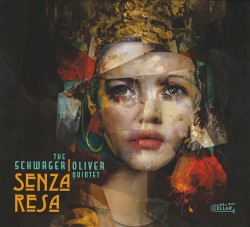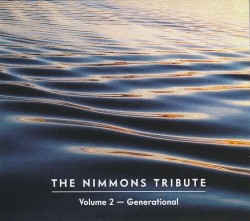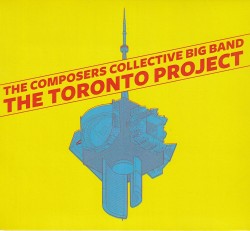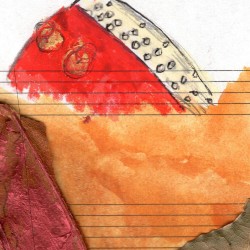 Ars Transmutatoria: Orange, Iku-Turso & Primati Primi
Ars Transmutatoria: Orange, Iku-Turso & Primati Primi
Michel Lambert
Jazz from Rant (michellambert.bandcamp.com)
On Michel Lambert’s website, one can embark on a virtual audiovisual tour of the entire Ars Transmutoria experience spanning from the Rouge, Bleu, Bronze and Orange volumes, available individually or as a deluxe boxed set, and subsequent works expanding on the series. Lambert explains “Ars Transmutatoria is the process of work! Collecting plants, creating scores, work with improvisers, etc... It is an ongoing process with new works to come.” The art gallery format is interesting because intuitively, for a piece to be exhibited alongside other works it demands to be confined to a space; one that allows for distinct statements to be made but requires a level of physical stasis and order. However, in reality this web application is a beautifully liberating way to engage with Lambert’s work, in that it allows for beholders to take a guided tour or roam free on their own accord while equipped with a concise user interface. The museum itself colour-codes all the rooms, which helps illuminate Lambert’s original multi-disciplinary concept of strikingly visual scores, helping listeners abstractly yet thoughtfully navigate between conceptual zones in their mind.
 Orange may not be the final room in the tour, but it represents the end of the beginning for this sprawling project. It is perhaps the most ethereal experience of the colour saga. While all volumes up to this point have explored different corners of the Lambert network’s prismatic textural universe, Orange is a deep dive into the emotional power of resonances. Liner notes here take particular pride in the album’s incorporation of the booming low-end warble of the maikotron contrabasse, which could very much devour all it touches, and Lambert unleashes teeth-clattering fury out of its deep drone. However, when transferring registers there is a distinctly phlegmy break in its sustained tones, allowing for it to envelop Raoul Björkenheim’s flowy guitar harmonics rather than engross. In this sense, this almost offers a thesis for the first leg of Ars Transmutoria; painting around the lines rather than purely within, resembling that elusive dustpan-adjacent sketch in the companion art for Un Jour dans la Forêt.
Orange may not be the final room in the tour, but it represents the end of the beginning for this sprawling project. It is perhaps the most ethereal experience of the colour saga. While all volumes up to this point have explored different corners of the Lambert network’s prismatic textural universe, Orange is a deep dive into the emotional power of resonances. Liner notes here take particular pride in the album’s incorporation of the booming low-end warble of the maikotron contrabasse, which could very much devour all it touches, and Lambert unleashes teeth-clattering fury out of its deep drone. However, when transferring registers there is a distinctly phlegmy break in its sustained tones, allowing for it to envelop Raoul Björkenheim’s flowy guitar harmonics rather than engross. In this sense, this almost offers a thesis for the first leg of Ars Transmutoria; painting around the lines rather than purely within, resembling that elusive dustpan-adjacent sketch in the companion art for Un Jour dans la Forêt.
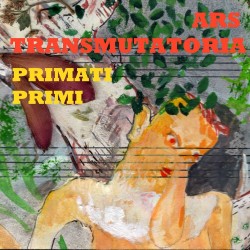 Iku-Turso and Primati Primi mark the beginning of a new era. Lambert says: “The visual scores for those two releases are a bit different. There are 12 of them divided in two recording sessions. One took place in Helsinki, Iku-Turso and the other in Rome, Primati Primi.” Gone are the monochromatic motifs of yesteryear; enter zoomorphism. Resurrected are the poetic pivot points from Rouge, with Iku-Turso proving that Jeanette Lambert’s profoundly tuneful approach to conveying language and image is better than ever. For a specific example, note the musicality of the ng sound in Self-Distancing, in which the word fries as it decays, creating an illusory effect that obscures the phrase’s ending while conveying the universal feeling of lingering on a thought longer than expected. Lambert is all melody while rapper/poet Beamer(!) is decisive, comping rhythms, painting thick lines around Michel Lambert’s trembling snare patterns like if the Orange maikotron could burn books with a tongue so precise it proves that words can briefly take back the mantle from pictures.
Iku-Turso and Primati Primi mark the beginning of a new era. Lambert says: “The visual scores for those two releases are a bit different. There are 12 of them divided in two recording sessions. One took place in Helsinki, Iku-Turso and the other in Rome, Primati Primi.” Gone are the monochromatic motifs of yesteryear; enter zoomorphism. Resurrected are the poetic pivot points from Rouge, with Iku-Turso proving that Jeanette Lambert’s profoundly tuneful approach to conveying language and image is better than ever. For a specific example, note the musicality of the ng sound in Self-Distancing, in which the word fries as it decays, creating an illusory effect that obscures the phrase’s ending while conveying the universal feeling of lingering on a thought longer than expected. Lambert is all melody while rapper/poet Beamer(!) is decisive, comping rhythms, painting thick lines around Michel Lambert’s trembling snare patterns like if the Orange maikotron could burn books with a tongue so precise it proves that words can briefly take back the mantle from pictures.
This victory is brief because nary a discipline owns the mantle.
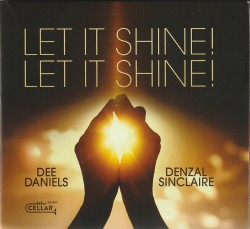 Let It Shine! Let It Shine!
Let It Shine! Let It Shine!

